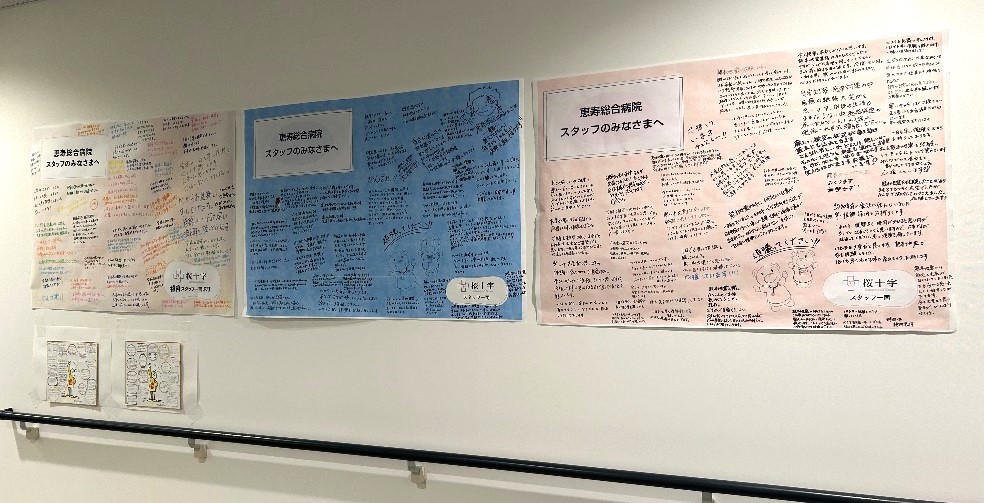In the affected areas, the disaster damages communities and infrastructure, creating a situation where reconstruction takes priority. Under these circumstances, it becomes difficult for daily operations to be fully carried out. Nevertheless, in order to move forward toward recovery, HuMA-supported Keiju Medical Center in Nanao City is continuing its normal activities. Today, we participated in student recruiting activities. However, there was a lack of staff to explain the hospital to students, so HuMA doctors, along with Dr. Arai, Chief of Obstetrics and Gynecology, were invited to participate in a hospital information session being held in Kanazawa City.
As an outsider, Dr. HuMA could not explain the outline of the hospital or its treatment to those who came to listen to the explanation of Keiju Medical Center, but he spoke about his feelings through disaster relief.
“What you can do in this unique training program at this hospital. That is to see up close how Dr. Arai and others are not putting themselves first in this disaster, but are sacrificing themselves for the sake of mothers and babies. This is exactly what we need to learn as doctors.”
“It will be next year when the students will enter the hospital, but the scars of the disaster still remain. Training at Keiju Medical Center is more than acquiring knowledge and skills in medicine; it is also about acquiring the pride, ethics, and mindset of a physician. This is something that I, as a doctor myself, have already strongly felt through this support activity, and I believe that it will be a valuable experience that cannot be obtained at any other hospital. I hope that today will be an opportunity for students to learn at this hospital, and I hope that it will lead to their future,” HuMA doctor also thought.
After the event, doctors visited the current situation in Shika Town on the way to the hospital.
* * * * *
Today, there were no advanced deliveries, so the HuMA midwives worked in the ward, performing routine tasks such as attaching two delivery monitors, working with the monitors to capture electronic medical records, taking baby vital signs, bathing, feeding, and assisting with breastfeeding.
During the morning meeting, information sharing for maternal-fetal management was discussed. In the past, the monitors conducted by the ward staff could be checked by the doctors in a database, but due to the disaster, this is no longer possible. They were forced to go back to analog, and thorough awareness was given to ensure that paper-based direct confirmation with physicians would not be left out. With the shift to electronic systems, we felt that what had been taken for granted was no longer possible due to the disaster, and that a small workload was being placed on them.
HuMA will continue to dispatch midwives and do what we can to help.


